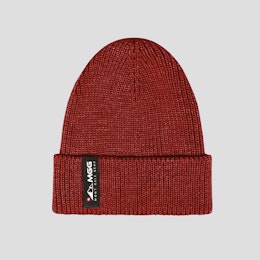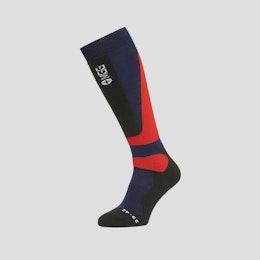Once upon a time, freestyle skiing, or freeskiing as we know it today, was truly that: free. This was an era of self-expression, when loud designs were matched by even louder hair-dos. Anything went.
Born of the counterculture hotdogging scene of the 1960s and 70s, ski ballet is the epitome of this unbridled freedom, and the apotheosis of skiing as a form of interpretive art. A romance of alpine skiing, ballet, acrobatics, musicality, and figure skating, it combines the grace of dancing on snow, with awe-inspiring spins, flips, and ski control, all of which remain eye-wateringly extreme, decades on.
As time passed, the loose, free-flowing origins of this previously unrestricted sport gave way to an increasing emphasis on professional events. From the early 1980s onwards, ski ballet, both in film & television, and in competition, entered the public consciousness like never before. What the sport gained by becoming more competitive, however, ultimately contributed in part to its decline, as competitors found themselves ever more constrained by rules and point scoring requirements. The creativity and innovation that originally defined ski ballet was stifled, in a futile attempt to design reliable judging criteria.
The myriad manoeuvres performed by ski ballet athletes take many years to master, and most came from multi-discipline backgrounds, by necessity. Specialist equipment is also mandatory, including short and light skis, extra long titanium poles, and purpose designed minimalist bindings (which resemble early snowboard bindings). Dynastar, Leki, and co, ceased manufacturing such niche hardware in the early 2000s.
“Yet, only two years later at the 1994 Lillehammer Winter Olympics in Norway, ski ballet was nowhere to be seen. The IOC was seemingly disinterested in attempting to codify the interpretive beauty of a form which blurred the lines between sport and art.”
In 1992 at Albertville in France (or more specifically on the slopes of Tignes), Annika Johansson and Fabrice Becker were both competing in their first Winter Olympics. This was the second and final Winter Olympics at which ski ballet would feature as a demonstration sport, as one of the three freestyle skiing events, which also included moguls and aerials. Annika, who later won three World Cups with a total of 32 podium finishes, who held a top five World Cup ranking for 10 years, and who was a World Champion bronze medallist three times, as well as six time Swedish national champion, took home 5th place, and Fabrice, who went on to win two World Championship titles and who amassed 23 World Cup wins during his career (along with numerous podium finishes), won the gold medal. Both exhibited breathtaking grace, skill, and artistry, with their respective runs.
Yet, only two years later at the 1994 Lillehammer Winter Olympics in Norway, ski ballet was nowhere to be seen. The IOC was seemingly disinterested in attempting to codify the interpretive beauty of a form which blurred the lines between sport and art. And, after 2000, FIS, the oft maligned Fédération Internationale de Ski, skiing’s global governing body, which so many freeskiers still love to hate, halted all formal Acroski competitions (as it had become known from 1996 onwards). In so doing, they spelt the demise of this unique manifestation of alpine skiing.
Therefore, on paper, we might conclude that ski ballet is a long lost discipline, a relic of an unregulated, devil-may-care age, when demonstrating your craft was more important than thinking about the future of your knees. But you’d be wrong.
“This was not an attempt at recreation, but instead was born of a desire to prove that even 30 years later, a handful of individuals still possess the athletic skills and flexibility to express themselves on snow in a way that very few freestyle skiers today can.”
Fast forward to 2023, and a plan was hatched in Verbier over an early-April dinner. What if it were possible to reclaim the glory of ski ballet, but to make it accessible for a new audience, by capturing its essence with modern photographic and videographic technology, in a way never witnessed before? Weeks of enquiries later, Annika and Fabrice answered the call to arms. And, on the first weekend of August 2023, a peculiar scene unfolded at 3,500m, high on the Saas-Fee glacier.
What you see in these campaign images and film, captured by world renowned photographer Matt Holyoak and videographer Scott Goedkoop, is the culmination of a dream to bridge the past with the present. This was not an attempt at recreation, but instead was born of a desire to prove that even 30 years later, a handful of individuals still possess the athletic skills and flexibility to express themselves on snow in a way that very few freestyle skiers today can. Armed with a sense of wonder, we hope that freeskiers around the world now find themselves inspired to weave elements of ski ballet into their skiing, and reimagine forgotten moves and techniques in a present day context.
For us at MGG, what started as an original way to reminisce about an era when the quality, design, and longevity of sweaters like our own was commonplace, and to be expected as standard, quickly evolved into so much more than we could ever have imagined. We have Annika and Fabrice to thank from the bottom of our hearts for the determination and mastery that they brought to a mesmerising and unexpectedly emotional two day spectacle.
Watch the Ballet’s Back campaign film: HERE
Visit the Ballet’s Back campaign page: HERE
*****
With thanks to Annika & Fabrice for their considerable and invaluable input, and editing.
 Add
Add
 Add
Add
 Add
Add
